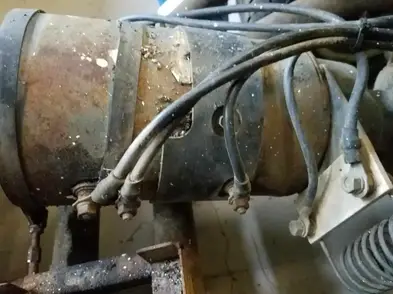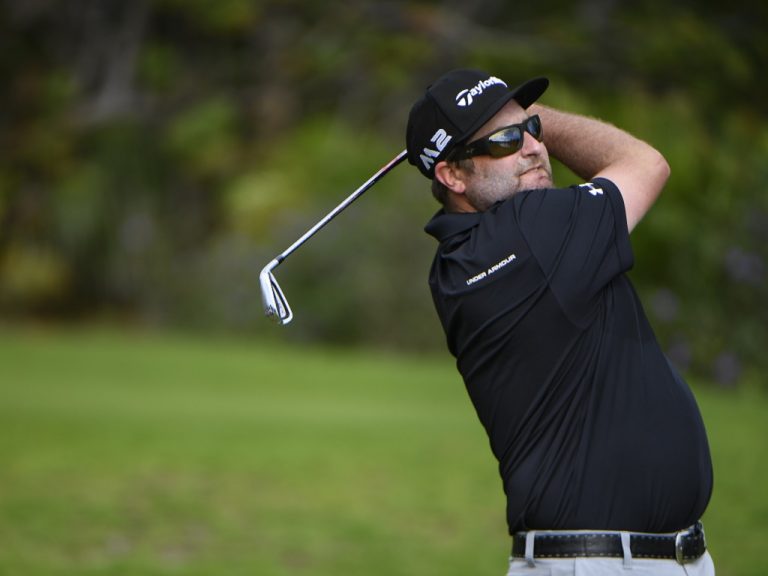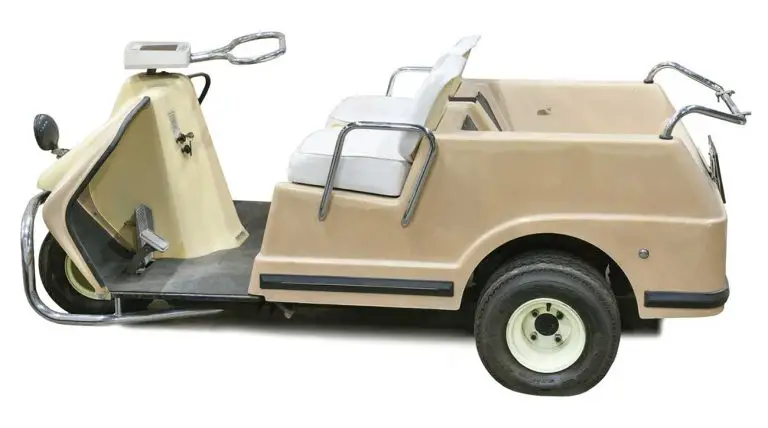How To Test A Golf Cart Motor

Welcome to the world of golf cart maintenance! The motor is the powerhouse that drives your golf cart, ensuring you have a smooth and enjoyable ride on the course. To keep your golf cart performing at its best, it’s important to regularly test the motor. By doing so, you can identify any potential issues, ensure optimal performance, and prevent unexpected breakdowns.
In this comprehensive guide, we will walk you through the process of testing a golf cart motor, providing you with the knowledge and steps necessary to assess its performance. Whether you own an electric or gas-powered golf cart, testing the motor is a critical aspect of maintenance that should not be overlooked.
Testing your golf cart motor allows you to evaluate its power output, speed, and efficiency, ensuring that it is operating at its peak performance. Additionally, it gives you the opportunity to inspect various motor components and troubleshoot any problems that may arise. By taking the time to test your golf cart motor, you can prolong its lifespan, prevent costly repairs, and enjoy a reliable and efficient golf cart experience.
So, if you’re ready to dive into the world of motor testing and maintenance, let’s explore the step-by-step process to ensure your golf cart motor is in top shape for your next round of golf!

Why Test Your Golf Cart Motor?
Before we dive into the testing process, let’s understand why it’s important to test your golf cart motor. A well-functioning motor is essential for a smooth and enjoyable golf cart experience. Testing the motor allows you to detect any performance issues, such as power deficiencies or motor malfunctions, and take appropriate action to address them. By proactively testing your golf cart motor, you can ensure reliability, extend its lifespan, and avoid unexpected breakdowns on the course.
Preparing for Motor Testing
Before you begin testing the golf cart motor, it’s essential to prioritize safety and gather the necessary tools and equipment. Safety precautions should never be overlooked when dealing with electrical components. Additionally, having the right tools on hand will enable you to accurately assess the motor’s performance.
Safety Precautions
When working with a golf cart motor, safety should be your top priority. Always wear appropriate protective gear, such as safety glasses and gloves, to minimize the risk of injury. Additionally, ensure that the golf cart is turned off and the key is removed from the ignition before conducting any tests. It’s also a good idea to disconnect the battery to prevent accidental starts or electric shocks.
Gather Necessary Tools and Equipment
To properly test your golf cart motor, you will need a few essential tools and equipment. Here’s a list of items you should have:
- Multimeter: A multimeter is a versatile tool that allows you to measure various electrical parameters. It will be instrumental in assessing the motor’s performance and diagnosing any issues.
- Insulation Tester: An insulation tester measures the insulation resistance of the motor’s windings, helping to identify potential electrical faults.
- Wrenches and Screwdrivers: These tools will be necessary for accessing and inspecting the motor components.
- Safety Equipment: Safety glasses, gloves, and other protective gear to ensure your well-being while working with electrical components.
Checking Motor Performance
The performance of the golf cart motor can be evaluated through various tests and assessments. Let’s explore the key aspects to consider when testing the motor’s performance.
Motor Power and Speed
One of the essential factors in motor testing is evaluating its power output and speed. A powerful and efficient motor ensures a smooth ride on the golf course. Let’s explore how you can assess these parameters.
Assessing Power Output
To evaluate the power output of your golf cart motor, you’ll need to measure the voltage and current supplied to the motor. This can be done using a multimeter. Set the multimeter to the appropriate voltage and current ranges and connect it to the motor terminals. By measuring the voltage and current during operation, you can calculate the power output using the formula P = V x I, where P is power, V is voltage, and I is current.
Analyzing Speed
To test the speed of your golf cart motor, you can use a GPS speedometer or a speedometer app on a smartphone. Ensure that the golf cart is on a level surface and free from any obstructions. Take note of the speed readings at various throttle positions to ensure consistent and smooth acceleration.
Motor Efficiency
Motor efficiency is an important factor to consider when testing the golf cart motor. An efficient motor not only saves energy but also contributes to the overall performance and longevity of the motor. Here are some aspects to assess the motor’s efficiency:
- Energy Consumption: Monitor the energy consumption of the motor during operation. A sudden increase in energy consumption may indicate an issue with the motor’s efficiency.
- Heat Generation: Excessive heat generation during motor operation can be a sign of inefficiency. Check for abnormal heat levels and ensure proper ventilation around the motor.
Testing Motor Components
In addition to evaluating the motor’s performance, it’s essential to inspect and test its various components. Let’s explore the key components to check during motor testing.
Inspecting Electrical Connections
Inspect the electrical connections of your golf cart motor, including wires, connectors, and terminals. Look for any signs of wear, corrosion, loose connections, or damaged insulation. Ensure that all connections are secure and properly insulated to prevent electrical issues and potential motor failure.
Evaluating Motor Brushes
Motor brushes play a vital role in the motor’s performance by providing electrical contact with the armature. Inspect the motor brushes for wear, damage, or improper contact. Worn-out brushes can lead to reduced power output and motor inefficiencies. If the brushes are worn, consider replacing them with new ones of the correct size and material.
Testing Motor Bearings
Motor bearings allow smooth and efficient rotation of the motor’s shaft. Over time, bearings can wear out, leading to increased friction, noise, and decreased performance. Check the motor bearings for any signs of wear, excessive play, or abnormal noise. If necessary, lubricate or replace the bearings to ensure optimal motor performance.
Troubleshooting Motor Issues
During motor testing, you may come across certain issues or discrepancies that require troubleshooting. Let’s explore some common motor problems and the corresponding corrective actions.
Identifying Common Motor Problems
- Loss of Power: If your golf cart experiences a significant loss of power, it may indicate issues with the motor, such as worn brushes, faulty connections, or a damaged armature.
- Excessive Heat Generation: Overheating can occur due to a variety of reasons, including poor ventilation, excessive load, or internal motor issues. Addressing the root cause is essential to prevent motor damage and ensure safe operation.
- Abnormal Noise or Vibration: Unusual noise or vibration during motor operation may indicate problems with the bearings, loose components, or misalignment. Promptly investigate and resolve these issues to prevent further damage.
Taking Corrective Actions
When troubleshooting motor issues, it’s important to follow the manufacturer’s guidelines and consult professional assistance when needed. Here are some general corrective actions to consider:
- Inspect and Clean Connections: Ensure all electrical connections are secure, clean, and free from corrosion or damage. Tighten any loose connections and replace damaged wires or connectors.
- Replace Worn Brushes: If the motor brushes are worn or damaged, replace them with new ones of the correct size and material. Properly seat the brushes and ensure good contact with the armature.
- Lubricate or Replace Bearings: If the motor bearings are worn or noisy, lubricate them with appropriate lubricants or replace them with new ones. Ensure proper alignment and smooth rotation of the motor shaft.
Maintenance and Care for the Golf Cart Motor
To ensure the longevity and optimal performance of your golf cart motor, regular maintenance and care are crucial. Let’s explore some essential practices to keep your motor in top shape.
Cleaning and Lubrication
Periodically clean the motor and its surrounding components to remove dirt, dust, and debris that can affect its performance. Use a soft cloth or brush to gently clean the exterior surfaces. Avoid using harsh chemicals that could damage the motor’s finish or components. Additionally, lubricate the motor bearings as per the manufacturer’s recommendations to reduce friction and ensure smooth operation.
Proper Storage and Handling
When the golf cart is not in use, proper storage and handling of the motor are essential to prevent damage and maintain its functionality. Store the cart in a clean, dry, and well-ventilated area, away from direct sunlight and extreme temperatures. Ensure that the motor is protected from moisture and dust. Follow the manufacturer’s guidelines for specific storage recommendations.
Conclusion
Testing your golf cart motor is a vital step in ensuring its optimal performance and longevity. By following the testing procedures outlined in this guide and addressing any issues that arise, you can maintain a reliable and efficient motor for your golf cart. Remember to prioritize safety during testing, consult the manufacturer’s instructions, and seek professional assistance when needed. With a properly functioning motor, you can enjoy a smooth and dependable ride on the golf course for years to come.





